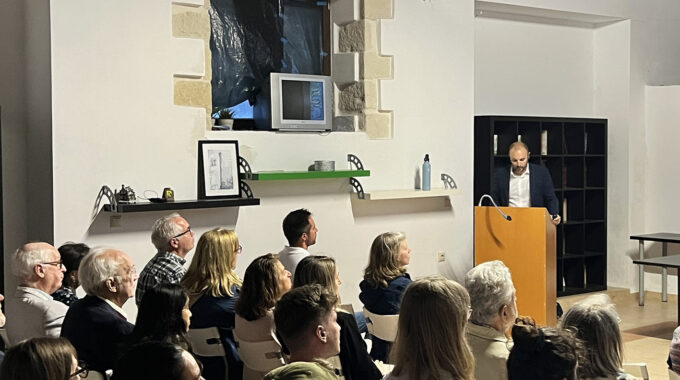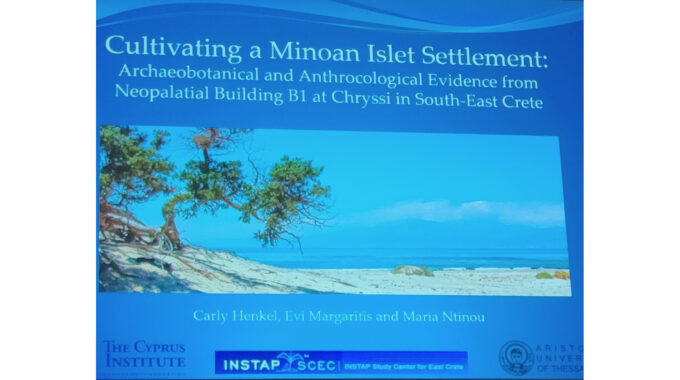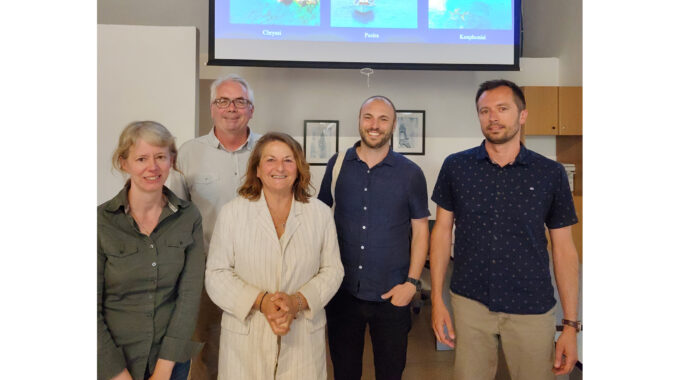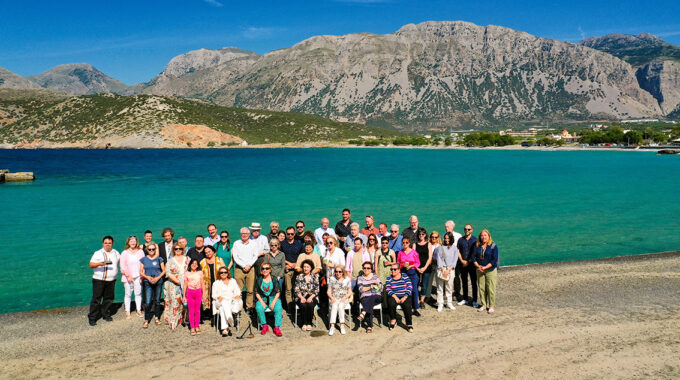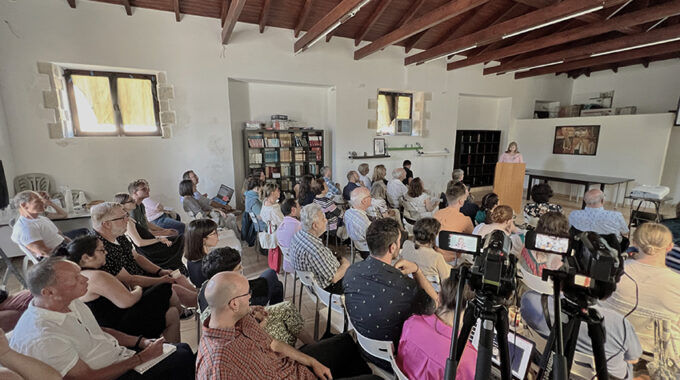The old customs house at Pacheia Ammos was again the site of a two-day conference, this time focusing on Chryssi Island and island archaeology of small islets around Crete (Fig. 1). The meeting started on Friday, June 9th, with a keynote lecture by Alex Knodell, associate professor of classics at Carleton College (Fig. 2). Alex introduced the audience to the world of small island archaeology in the Cyclades, a fascinating, multi-disciplinary regional survey that aims to put small island cultures into the archaeological spotlight.
The conference continued on Saturday, June 10th, with a full day of papers, many of which focused on the recent research on Chryssi Island (Figs. 3, 4). The presentations included studies of ceramic loom and net weights, stone carving and other technologies, metal and jewelry hoards (Fig. 5), subsistence and water management strategies on Chryssi, as well as studies on maritime networks along the south coast of Crete.
Several other papers provided a diachronic comparative perspective from nearby islands. These included preliminary fieldwork reports from the islet of Amonachos Kavallos in remote southeast Crete, Agioi Pantes in the Mirabello Bay, Dragonada of the coast of Cape Sidero, and a paper focusing on climate change from the well-studied island of Pseira.
A roundtable discussion at the end of the day provided the attendees with the opportunity to further discuss some of the issues that had been addressed by several of the speakers during their presentations; defining marginality and peripherality, seasonal vs. permanent occupation of offshore islands, and questions regarding the nature of exploitation and colonization of small islands around Crete.
The conference was made possible with the generous support of the Study Center for East Crete, the Ephorate of Antiquities of Lasithi, the municipality of Ierapetra, and the people of Pacheia Ammos. Special thanks go to Konstantinos Tzortzinis, manager of digital media at ASCSA, who tirelessly documented the entire event and will make the audio-visual recordings available to the public in the near future (Fig. 6).

